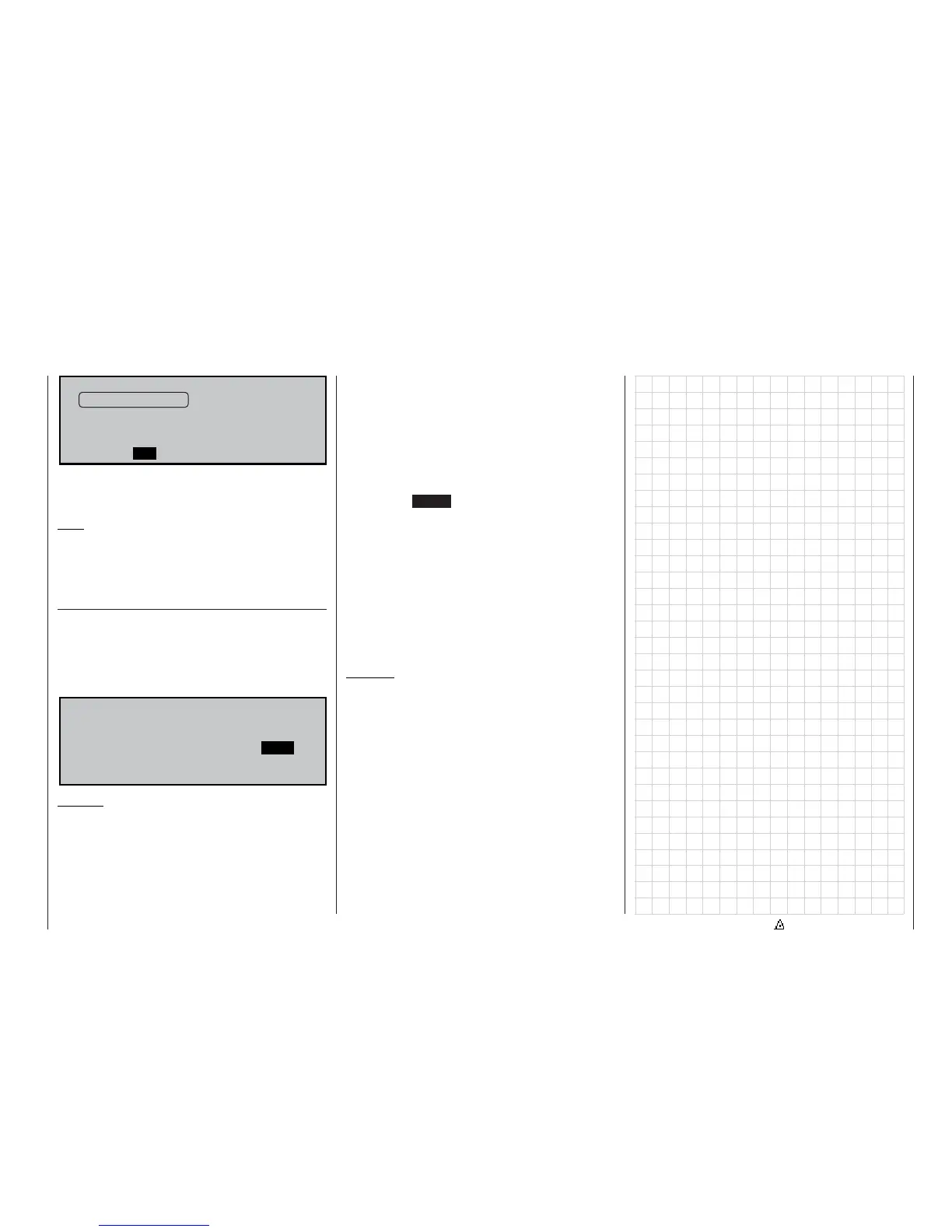113
Program description: Special functions
F A I L S A F E ( P C M 2 0 )
P o s i t i o n T i m e B a t t e r y F . S .
. 2 5 s o f f
S E L S E LS T O
P o s i t i o n s t o r e d
The FAIL-SAFE servo positions can be overwritten at
any time by selecting the appropriate menu and sto-
ring the current transmitter settings anew.
Note:
Some PCM receivers feature outputs 9 and 10, but
variable fail-safe settings are not available for them;
both servos move to the centre position if interference
occurs.
Receiver battery FAIL-SAFE
As soon as the receiver battery voltage falls below a
particular value, the servo connected to receiver out-
put 1 (which is assigned permanently to the “Battery
F.S.” function) runs to one of three pre-set positions.
The purpose of this function is to indicate to the pilot
that the receiver battery is failing.
F A I L S A F E ( P C M 2 0 )
P o s i t i o n T i m e B a t t e r y F . S .
. 2 5 s - 7 5 %
S E L S E LS T O
Caution:
The “Battery fail-safe” function is a useful cont-
ribution to fl ying safety, but you should never be
tempted to rely upon it as a standard warning of
“time to land”, not least because the discharge
behaviour of batteries varies widely according to
type, and in any case the battery characteristics
change as it ages.
You can program any of three positions as the batte-
ry fail-safe setting for servo 1, and they are selected
using the right-hand SEL fi eld:
• +75% travel in one direction,
• 0% servo centre, or
• -75% travel in the opposite direction.
Select your preferred servo position using the rotary
control.
Pressing the CLEAR button switches the “Battery
F.S.” function off.
If the battery fail-safe signal is triggered, you can re-
gain control of the affected channel by briefl y ope-
rating it (i.e. by moving the throttle stick for a fi xed-
wing model, or the transmitter control of a mixer in-
put which affects servo 1). This disengages the FAIL-
SAFE servo, and it returns to the pilot’s commanded
position. If this should occur, you must immediately ini-
tiate the landing approach in order to have the best
possible chance of landing the model under full con-
trol.
Warning:
Never, ever, switch off the transmitter when you
are fl ying a model aeroplane – not even for test
purposes! If you do, you run a serious risk of lo-
sing the model, as you will be highly unlike-
ly to be able to re-activate the RF signal quick-
ly enough, since the transmitter always responds
with the security query “RF signal on YES / NO”
when switched on.

